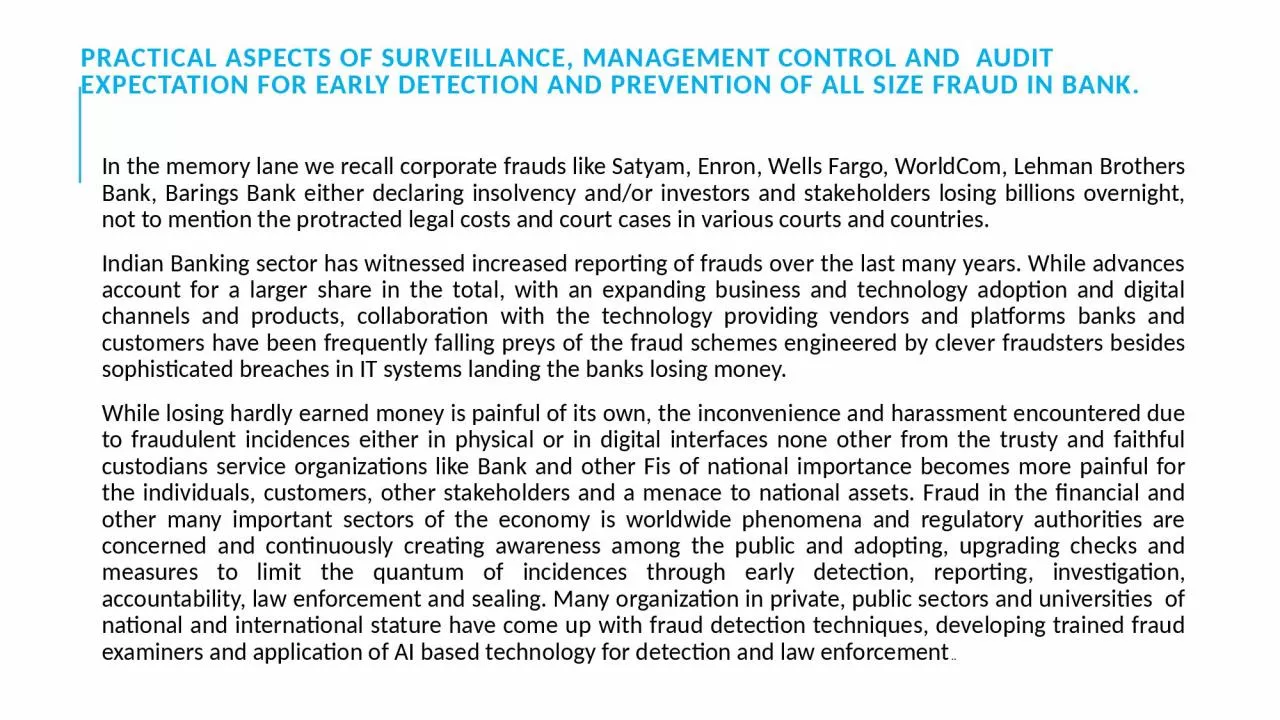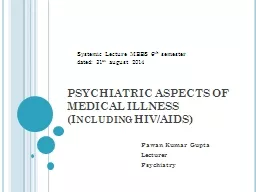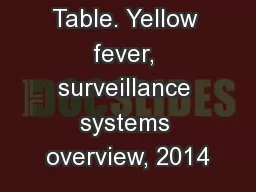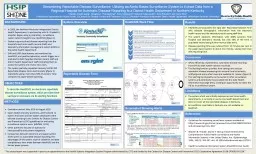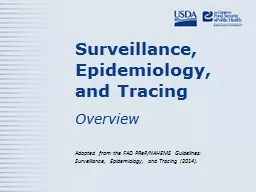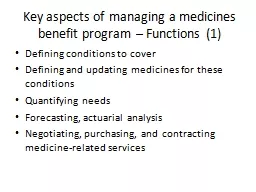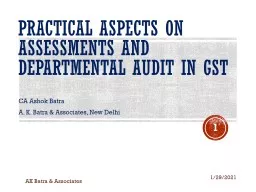PPT-PRACTICAL ASPECTS OF SURVEILLANCE, MANAGEMENT CONTROL
Author : helene | Published Date : 2024-02-02
AND AUDIT EXPECTATION FOR EARLY DETECTION AND PREVENTION OF ALL SIZE FRAUD IN BANK In the memory lane we recall corporate frauds like Satyam Enron Wells Fargo WorldCom
Presentation Embed Code
Download Presentation
Download Presentation The PPT/PDF document "PRACTICAL ASPECTS OF SURVEILLANCE, MANAG..." is the property of its rightful owner. Permission is granted to download and print the materials on this website for personal, non-commercial use only, and to display it on your personal computer provided you do not modify the materials and that you retain all copyright notices contained in the materials. By downloading content from our website, you accept the terms of this agreement.
PRACTICAL ASPECTS OF SURVEILLANCE, MANAGEMENT CONTROL: Transcript
Download Rules Of Document
"PRACTICAL ASPECTS OF SURVEILLANCE, MANAGEMENT CONTROL"The content belongs to its owner. You may download and print it for personal use, without modification, and keep all copyright notices. By downloading, you agree to these terms.
Related Documents

